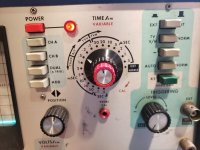Divarin
Veteran Member
It's back on the 2nd page of this thread: https://forum.vcfed.org/index.php?threads/neglected-pet-needing-some-love.1240018/post-1276569What scope have you got that hasn't got a trigger?
Dave
Hickok Model 517
Maybe it does and I just don't know how to use it, I'm pretty much a newb with scopes.

